ART AND HISTORY IN CALABRIA
The traces of the historical and cultural stratifications of this land, inhabited since the Neolithic age, emerge in different forms and ways and in different places, testifying to how generous it has been; the cradle of ideas and knowledge embracing every sphere of human spirit and activity.
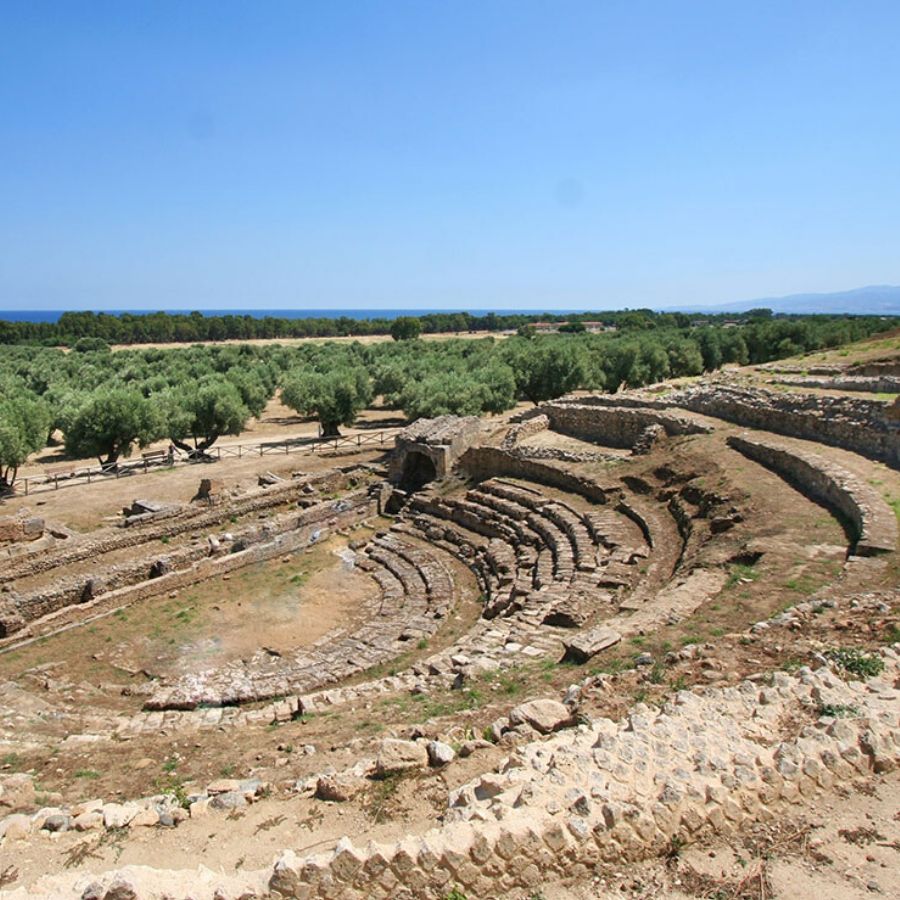
SCOLACIUM Archaeological Park and Museum
From Magna Graecia to the Normans – 4 km from the Oasis
A spectacular site among olive trees with a refreshment point in Roccelletta di Borgia.
Skylletion, which tradition says was founded by Ulysses, was a very important town in Magna Graecia, later becoming a Roman town with the name Minervia Augusta Scolacium. The ancient urban centre is located in the area closest to the sea, and is compared in importance to sites such as Herculaneum or Paestum. Excavations within the Archaeological Park have brought to light the remains of Roman buildings such as the theatre, the amphitheatre, the baths, the paved streets and the aqueduct, while no wall structures have yet emerged from the ancient Greek Skylletion, due to the superimposition of the Roman city; however, there are numerous ceramic finds from the 4th, 5th and 6th centuries BC. C. which can currently be visited in the museum of the archaeological park, housed in the former home of the Mazza barons. Inside the park, you can admire the ruins of the church of S. Maria di Roccella, built by the Normans between the end of the 11th and the first half of the 12th century. Analysis of what remains of the building reveals a mixture of Western Romanesque forms and Byzantine culture. It was home to Aurelius Cassiodorus.
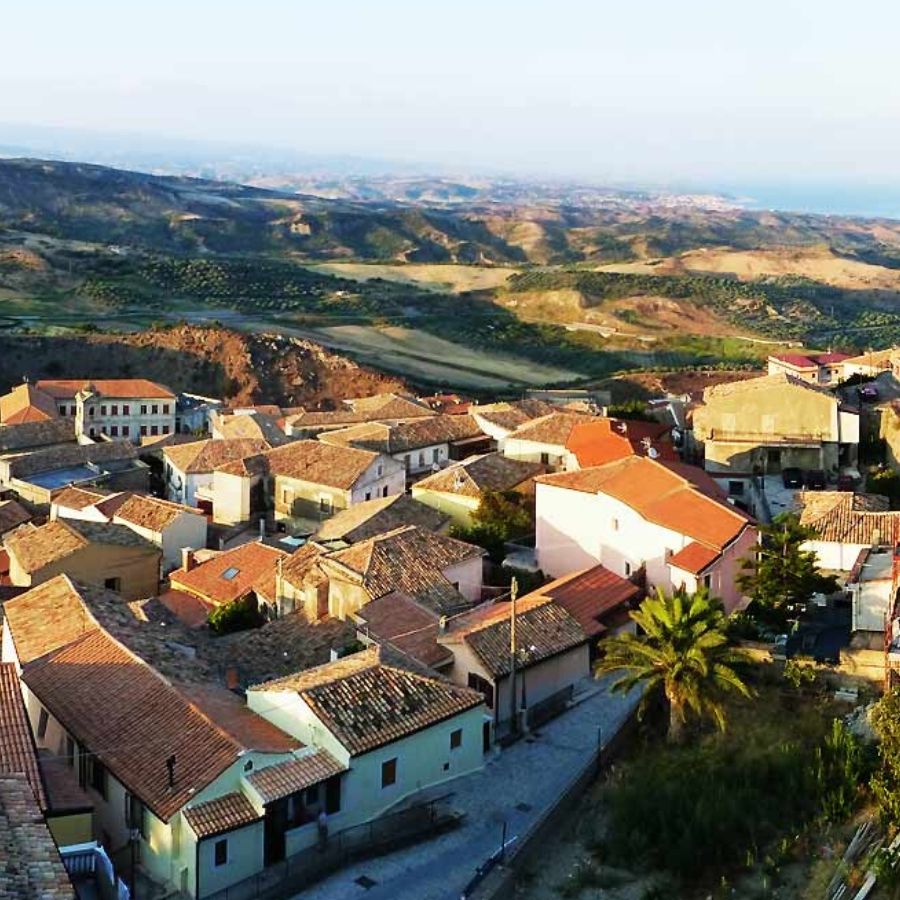
HIGH SQUILLACE
The Village and the Castle 7 km from the Oasis
A few kilometres from the coast on a hill overlooking a ravine is the centre of Squillace. The town still retains its medieval appearance and the remains of the impressive Norman castle. The ancient tradition of handmade ceramics is still alive and is worked and decorated in the old workshops using the same techniques as a hundred years ago.
Squillace Castle dominates the town from the highest point of the hill. It was built by the Normans, in the second half of the 11th century at the end of their campaign to conquer Calabria against the Byzantines, who had held the region, and southern Italy in general, for over five centuries. Squillace, in Norman times, was the most important administrative, political and religious stronghold on the Ionian coast. It was here that Roger of Altavilla gave San Bruno of Cologne the territories where the Carthusian monastery of Serra San Bruno would later be built. The Norman period is undoubtedly the most important for Squillace, which experienced a moment of great political-administrative, economic and religious fervour. The early 13th century is fundamental for the history of Squillace: it is at this time that, for the first time, the settlement is in fief under a count and the presence of a castellan.
Walking along Squillace’s main street, named after fellow-citizen General Guglielmo Pepe, one can admire numerous artistic stonework portals, some dating from before the famous 1783 earthquake and others from after. It is thought that the same stonemasons who worked on the façade of the Cathedral worked for a long time in Squillace, on behalf of Squillacesi patricians who wanted to decorate their palaces. These are imposing, rusticated portals with different keystones. Going up to the left, in a clearing, there is the portal of Palazzo Baldaya, that of Palazzo Pepe (now the Town Hall), then that of Palazzo MaidaChillà (Via S. Matteo); followed by that of Casa Mungo, Casa Chillà, Casa Megna, then that of the second Palazzo Pepe (with courtyard, ceiling fresco and well). Inside the courtyard, on the right, you can admire another magnificent finely worked portal with the stone coat of arms of the Ferrari family. These are just a few of the hundreds of portals scattered in every corner of the village, all beautiful and almost intact, despite the weather. Some of the portals predate the 1783 earthquake, the one in St Peter’s Church, the isolated one in Piazza Castello and another in the descent of Via dell’Antico Senato.
Pottery and terracotta craftsmanship is flourishing and has a long tradition, so much so that Squillace is one of the twenty-seven Italian municipalities that can boast the DOC mark. This is probably a very ancient art that developed as early as the Magna-Greek era. Many squillacesi works are kept in museums all over the world: London, Paris, New York, Capodimonte, Palermo. The most important product of the local craftsmen is “Sqllci 1654”, a piece kept in the Catanzaro Provincial Museum, now lost.
http://www.squillace.org/la-ceramica-artistica-di-squillace/
Decò Artstrong
Of the many craft shops, this one is located in a very atmospheric building. Beautiful pieces and kindness. Must-see.
Corso Guglielmo Pepe 50, 88069 Squillace, +39 0961 91202 – learn more on TripAdvisor
Bottega D’Arte Ceramiche Il Tornio
Viale Fuori Le Porte 46/48, 88069 Squillace, +39 0961 91244 – learn more on TripAdvisor
RELIGIOUS SITES AND SACRED PLACES
The monastery complex of S.. Chiara played a fundamental role in the urban growth of the city and diocese of Squillace, which over the centuries was divided into several buildings and was founded as far back as 31 August 1331, when the Count of Squillace Tommaso Marzano and Grand Admiral of the Kingdom of Naples, pleaded with Pope John XXII, then in Avignon, and obtained permission to found the monastery, which was only built, with the support of the Bishop of Squillace at the time, sixty years after the death of St. Clare. However, according to Fiore, it was built in 1581, the year in which a certain Marcello Minniti, from Guardavalle, built the monastery, later called the Minniti Monastery because many nuns in it belonged to that family. The actual area occupied by the ruins and the Monastery building can be delimited to an area of about 960 m²; the south-east and north-west sides face the main road leading up to the village. This road from the south ascends adjacent to the ruined side of the church and then curves and leads in the opposite direction adjacent to the northwest side of the monastery. This bend circumscribes a semicircular area used as a small square in front of the main façade of the Church of St Clare.
The small building dedicated to S. Mary of Mercy and also known as the ‘Gothic Church’ is located not far from the Minor Basilica and the Assanti-Palmisani palace, near Via dell’Antico Senato. Consecrated as a place of worship only in 1853 by Bishop Concezio Pasquini, it is possible to date the original construction of the building to the 13th century, perhaps as part of the urban planning impulse given to Squillace by the Swabian dynasty. It is a hall with a quadrangular plan, divided into four bays by a rather massive central pillar positioned at an angle to the perimeter walls. The bays are covered with ribbed cross vaults with square limestone ashlars. The keys of the four vaults are decorated with geometric and floral motifs. The original door, which is still the main entrance today, opens on the east side and is enhanced by a pointed portal made of white limestone ashlars. Dubbi sull’originalità del prospetto sud, dove sia il secondo accesso che le monofore sembrano posteriori: si tratterebbe in questo caso del riuso di materiali di pregio di XIII-XIV secolo provenienti forse dal medesimo edificio, riadattati quando nel XIX secolo l’aula fu restaurata per volere del nobile Giuseppe Rotella Marincola, in prospettiva della trasformazione in chiesa. A small archaeological sampling carried out in the building verified the absence of structures and stratigraphy prior to it.
The church, built after the 1783 earthquake, has a splendid façade with a broken gable surrounded by unusually bare-breasted bas-relief sculpted female figures.
The Sanctuary of the Madonna del Ponte is located in a secluded and hidden position, at the foot of the Squillace hill, at the point where the two rivers that surround it, the Alessi and the Ghetterello, join together to flow into the Ionian Sea. In the early Middle Ages, before the Sanctuary was built, there was a cenoby here, perhaps of Brazilian origin. According to legend, the church was built in memory of a young girl who was freed from the devil after seeing a painting of the Virgin Mary on an old wall. The fresco, which can still be seen today, depicts the Virgin Mary breastfeeding her child. The same depiction is engraved on a bell that dates back to 1585. What is certain is that in 1724 the new church was already in operation.
HISTORICAL SITES
The Ghetterello Bridge, better known as the ‘Devil’s Bridge’, is located at the foot of the northern slope of the Squillace cliff. The Ghetterello Bridge, better known as the ‘Devil’s Bridge’, is located at the foot of the northern slope of the Squillace cliff. It allowed the crossing of the river of the same name, to one of the entrances to the village, the one regulated by the Porta Giudaica, so-called because of the presence of the Giudecca, the Jewish quarter, perhaps present in Squillace since the 13th century. The bridge is built of local stone (unworked granite) and has an ogival arch, known as a ‘humpback’. A circular hole drilled in the masonry allows for better water drainage in case of flooding. The bridge was visible from the castle, enabling it to be defended in case of danger. 14th century
The finds housed in the museum come from the territory of Stalettì, and in particular from three areas: the Hellenistic site in the locality of Chillino (4th century B.C.), the church of San Martino di Copanello (5th-10th century), the Byzantine castrum of S. Maria del Mare (6th-11th century).
The scientific route is chronological.
Room 1. This room, located to the left of the entrance, houses artefacts from the classical period. These are mainly ceramic materials from the Chillino site and the Greek phase of the settlement of S. Maria del Mare.
Room 2. This room houses the late antique and early medieval period. Here are some valuable architectural fragments (small columns and capitals) recovered in the 1960s from the church of St Martin, the local stone sarcophagus still in situ in the same church, and finds from the 6th-7th century phase of the Byzantine castrum of St Mary of the Sea (ceramics, coins, bronze, iron and glass objects). Educational panels on the walls illustrate the history of the area between Late Antiquity and the Early Middle Ages, focusing in particular on the figure of Cassiodorus and the early Byzantine occupation.
Room 3. This room displays artefacts from the second Byzantine period (9th-11th centuries) up to the Norman conquest. Most of the finds come from the castrum of S. Maria del Mare: they are mainly ceramics, but there are also many coins including a gold tarì, iron and bronze objects and the very important deposit of Byzantine grenades. Educational panels on the walls illustrate the history of the area and in particular of the castrum between its destruction in the Longobard era and the Norman conquest.
Ground floor of Palazzo Aracri, Squillace, Italy
The ALA LEFT scientific path
The scientific project aims at reconstructing the history of the settlement of Squillace and its territory through archaeological finds from research carried out in the 1990s-11 (excavations and reconnaissance) as well as donations.
The study of the artefacts, which is currently in progress, has made it possible to organise the route in chronological phases, marked by the materials found:
- Room 2a: The Territory from Prehistory to the Roman Age
- Room 2b: From the Early Middle Ages to the Norman phase (6th / 7th century – 12th century);
- Room 3a: From the Norman-Swabian period to the Aragonese (13th century – 14th century);
- Room 3b: From the Aragonese to the Borgia settlement (15th cent. – 16th cent.).
The majority of these artefacts cover a chronological span from the Neolithic to the 16th century: arrowheads, scrapers, obsidian, ceramics, iron, bronze and glass objects, coins, jewellery, copies of inscriptions. The didactic route is developed through display cases, both wall-mounted and in the round, accompanied by explanatory panels in which an attempt is made to balance the relationship between information and images, in order to make the route lighter even for the uninitiated.
The ALA DESTRA scientific path
The display in the right wing complements the exhibition on the left wing of the museum, which contains artefacts of Classical Antiquity from the local area and artefacts from the early Middle Ages to the end of the 11th century from the castle.
The route is organised by classes of material and covers a chronological span from the 12th to the 16th century. The exhibits are mainly ceramics. In particular, the following:
- Pottery with red-band decoration (12th-14th century);
- Polychrome glazed ceramics (13th-16th century);
- Engobed and graffitied ceramics (15th-16th century);
- Kitchen ceramics (12th-16th century);
- Objects made of metal
- Objects made of glass.
Didactic panels on the walls define the evolutionary path of each class of material and describe the stratigraphic context in which they were found.
The Diocesan Museum of Sacred Art of Squillace was founded in 1984 by the Archbishop of the time, Antonio Cantisani, and is housed in the Bishop’s Palace, a building dating back to 1564. The collection occupies six rooms and contains important historical and artistic artefacts dating from the 14th to the 19th century, such as monstrances, chalices, candelabra, vestments, paintings, wooden sculptures and marble works; most of the works on display come from the treasury of the Norman cathedral, which was destroyed in the 1783 earthquake, but there are also valuable items from other diocesan religious buildings.
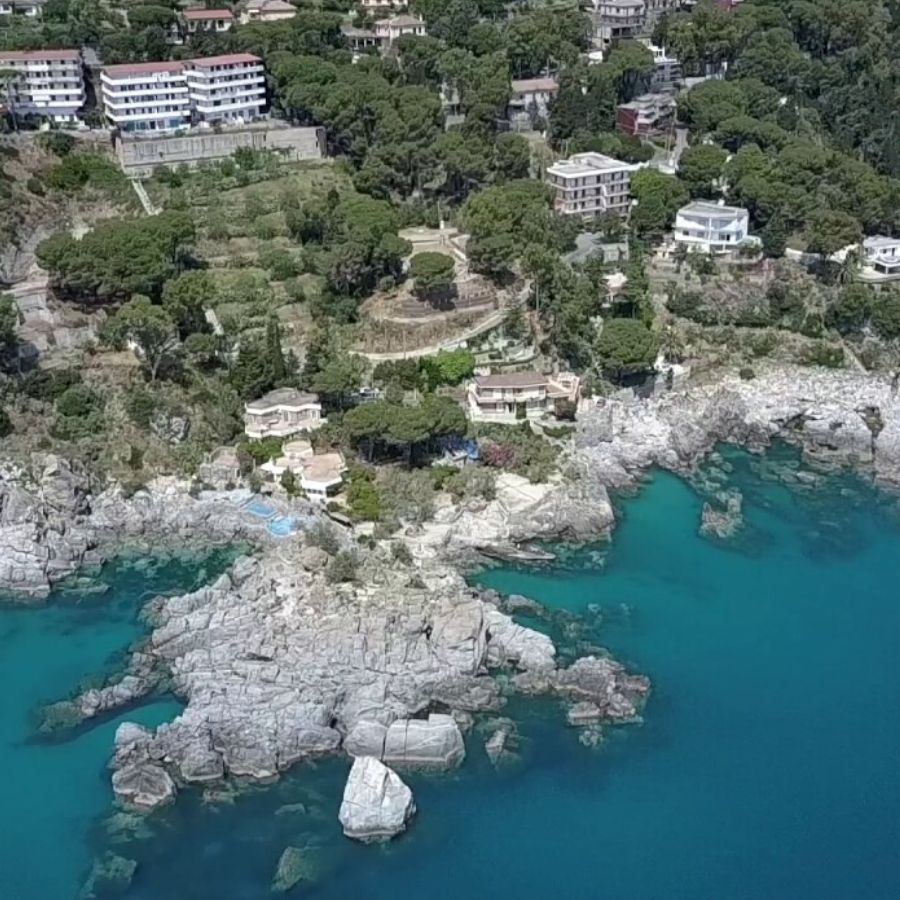
COPANEL
6 km from the Oasis
The entire territory of Copanello is characterised by lush hills of the typical Mediterranean flora and promontories of white granite that slope gently down to the sea, creating sandy beaches of fine sand, mixed with granite cliffs perforated in some places by caves into which the sea creeps, the most famous of which is San Gregorio, on the border with Caminia.
The area is even more interesting because of the events linked to Flavius Magnus Aurelius Cassiodorus, prime minister and advisor to Theodoric, King of the Goths, presumably born in 485 AD in Scolacium. Cassiodorus, after trying in vain to combine Eastern and Western culture, retired to his native land, where he founded the Vivarium, the Monastery of Vivario, whose name is said to derive from the fish-breeding nurseries, consisting of three tanks dug out of the rock, which Cassiodorus himself used to transfer the fish he had taken from the sea to breed and dispose of for the needs of the sanctuary. The Vasche di Cassiodoro go beyond the function of aquaculture for which they were intended, as they are intertwined with the significance of the Vivarium, a place of worship and a source of spiritual and scientific nourishment for all mankind, a sort of modern university. The cultural and spiritual needs of the Vivariense community gave rise to Cassiodorus’ extremely rich literary production, which, in the last decades of his secular life, fed 9 of the 13 or more works he wrote. In the same area are the remains of the ancient Church of San Martino, a small single-nave church housing a stone sarcophagus with Greek inscriptions dating back to the 8th century AD, long identified as the tomb of Cassiodorus. The building was founded on land belonging to Cassiodorus’ villa and normally identified with the monastery Vivariense. 8 Km away
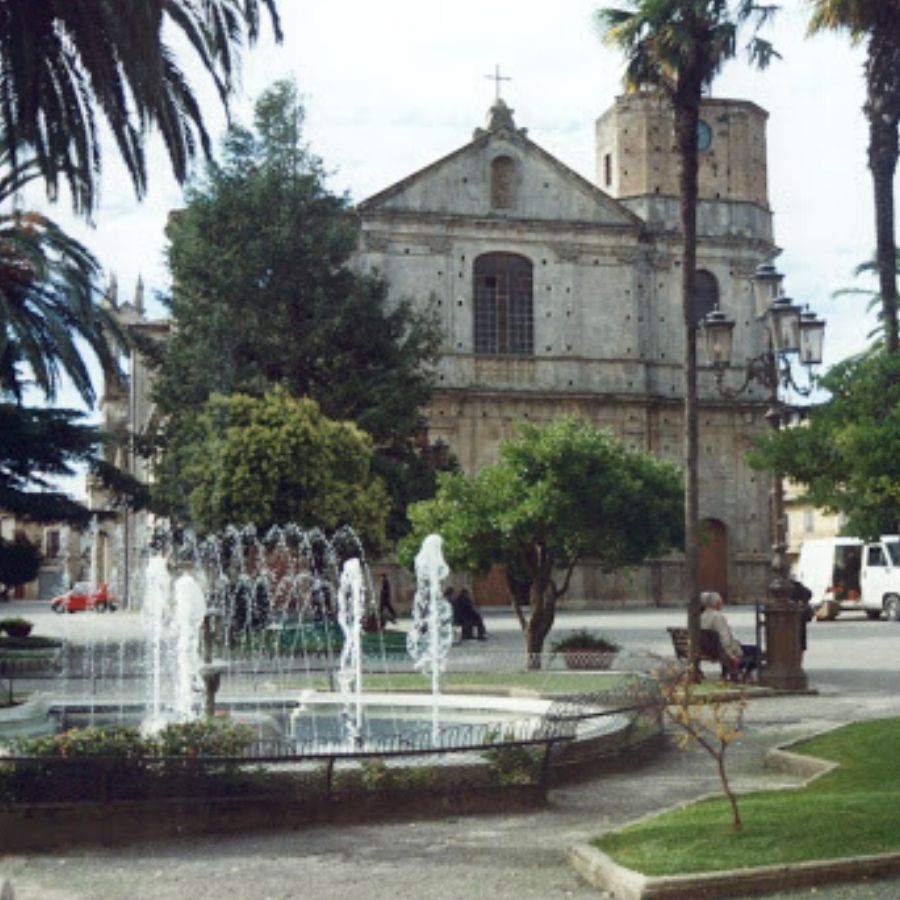
BORGIA
12 km from the Oasis
According to legend, Borgia was founded by the Athenian hero Menestheus on his return from the Trojan War, or even by Ulysses who was shipwrecked on those shores. More likely, the city was founded as a subcolony of Kroton to control the isthmus on the two seas. More likely, the city was founded as a subcolony of Kroton to control the isthmus on the two seas. Having come under the rule of the Britts in the 4th century BC, the city declined at the end of the 3rd century BC. In 123-122 BC, the Senate of Rome, through Caius Gracchus, decided to found the Colony of Minervia Scolacium. The territory of the colony was not limited to the Roccelletta plain, but had to extend to the flat areas along the Corace towards what are now Borgia, Catanzaro Lido and Copanello. Passed under Spartacus in 72 B.C., after a monumental revival in the Julio-Claudian period, in 96-98 A.D. a new colony was founded by Emperor Nerva with the name of Colonia Minerva Nervia Augusta Scolacium and the city expanded with the construction of the amphitheatre, the new theatre scene and the building of the baths.
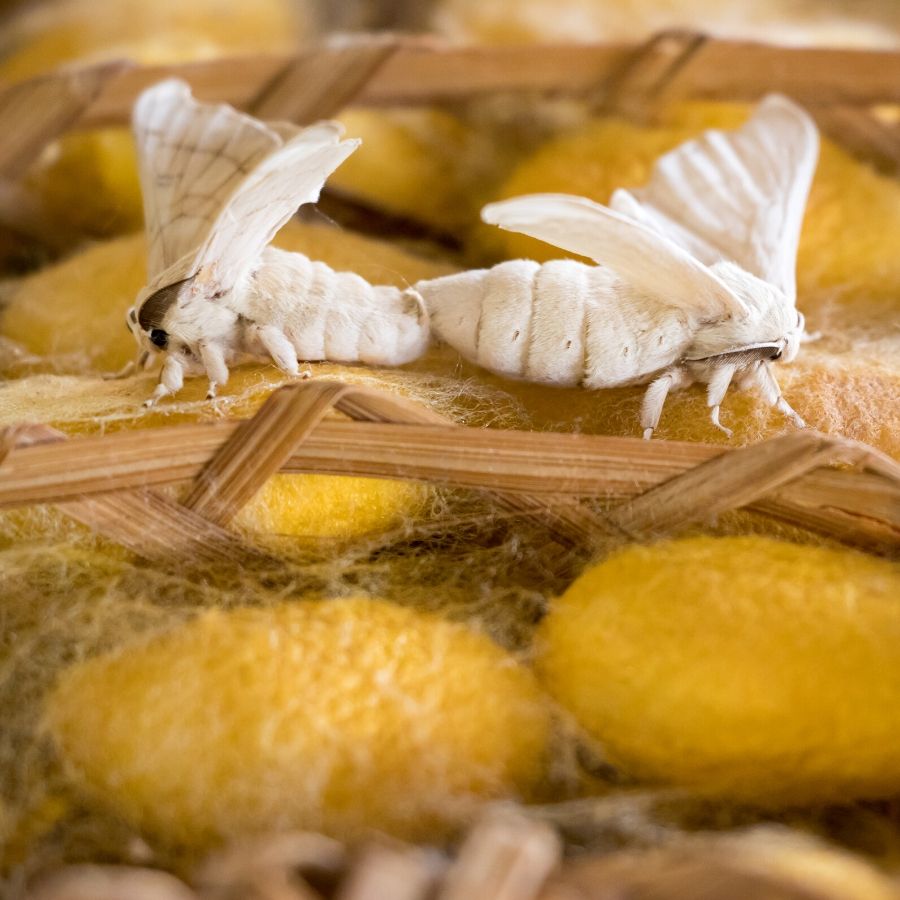
SAN FLORIO AND TIRIOLO: On the Silk Roads
Silk has been the wealth not only of the capital city but also of the entire region. The Baco, imported by the Arabs during their passage through Calabria, continues to be bred by a group of young people who have been able to look to the future while remaining attached to the great resource of the mulberry tree. Plant that they grow with care and passion. A visit to the Museo della Seta (Silk Museum) and the village of Tiriolo, where you can see the Tyrrhenian and Ionian Seas at a glance, is a must for anyone wishing to travel along the Ionian coast and savour Calabrian traditions.
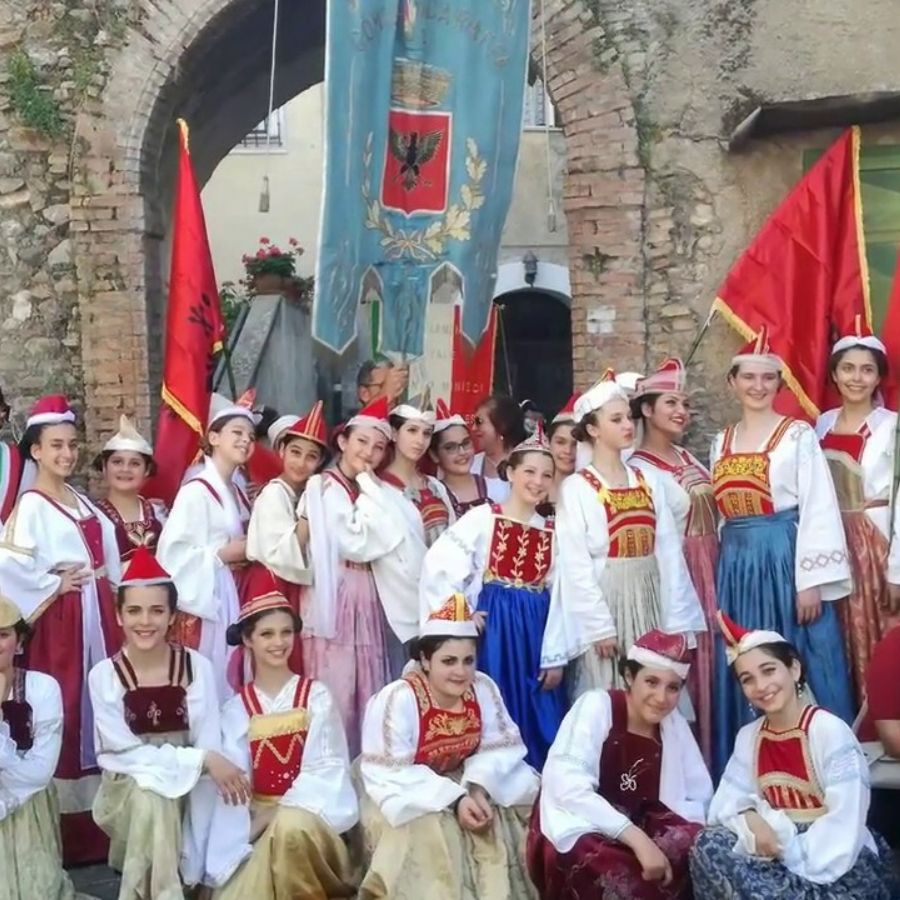
CARAFFA and its Albanian Origins
The Cultural Centre of the Country The “G. GANGALE” ARBERESHE INSTITUTE.
Caraffa di Catanzaro is an Arbëreshë (Italo-Albanian) town, founded during a large migration wave around 1448 by Shqipetare militia, Albanians who came in the retinue of Demetrio Reres and his two sons Basilio and Giorgio from the other side of the Ionian Sea in aid of the King of Naples Alfonso of Aragon. Demetrius, for his services to the king, was appointed governor of the province of Reggio, and his retinue, which remained in Calabria, gave rise to the towns around Catanzaro (Andali, Arietta, Caraffa, Carfizzi, Gizzeria, Marcedusa, Pallagorio, S. Nicola Dell’Alto, Vena di Maida, Zangarona).
Caraffa is one of the first Albanian settlements in Italy (in subsequent migrations they founded numerous other villages in Calabria and throughout southern Italy); the name repeats the family name of the Carafa family, Dukes of Nocera, to whom the Albanian guests, in gratitude for the concession of land, consecrated the village for time immemorial. An ancient Albanian dialect is still spoken in Caraffa, preserved only by oral transmission, which maintains many points of contact, especially with the Tosian dialect of southern Albania, now the official language of the land of the eagles. The dialect of the north is ghego, from which, perhaps by extension, the term gjegj was born, by which the Italo-Albanians call themselves ARBËRESHË. The initial settlements were represented not only by Caraffa, but also by Usito, located further down the valley, and Arenoso, situated on the hill of the same name on the outskirts of the present-day town. All the inhabitants settled on the flat ridge surrounded on three sides by a deep ravine, which is still the historical core of the village and which represented a good defensive position for warriors opposed by the surrounding villages. In 1783, the disastrous earthquake that shook the entire region destroyed a large part of the Albanian-speaking centre, causing a large number of deaths. In 1807, under French rule, Caraffa was granted management autonomy and became the University (now the Municipality) of the Comprensorio di Tiriolo. In 1834, Arthur John Strutt, an English man of letters and painter, reached the country during a trip that covered the whole of Calabria and Sicily. He described and painted the traditional dress of Caraffa in splendid watercolours. The cultural centre of the country The “G. GANGALE” ARBERESHE INSTITUTE, founded in 1996, is already part of the museum itineraries of the Province of Catanzaro.
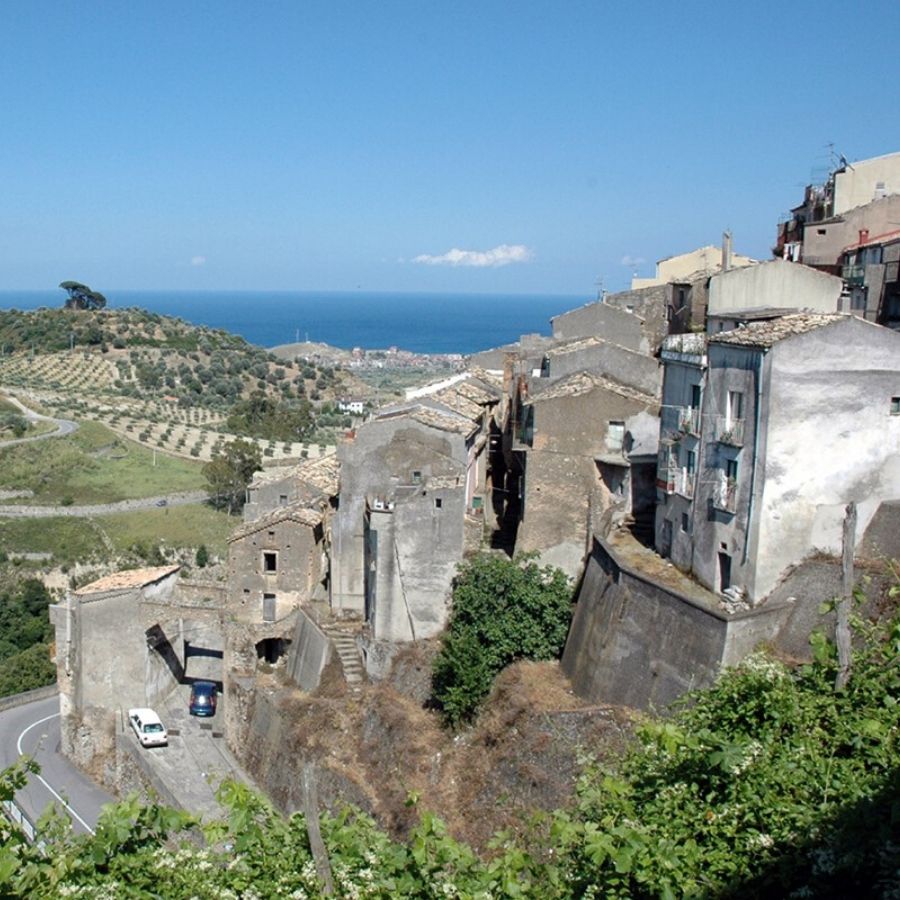
BADOLATO
Start of route from the Oasis: 50 km (Shockwave Itinerary)
Badolato is a charming medieval village characterised by a Byzantine layout with numerous churches arranged in the shape of a Latin cross and many characteristic alleys. Located in a strategic position in the Calabrian territory, it offers the visitor the possibility of ranging in all dimensions of the magnificent nature that surrounds it, including sea, hill, mountain and lake.
The thousand-year-old village of Badolato still retains intact its medieval urban structure, made up of charming narrow, winding alleyways that criss-cross the houses one behind the other. Badolato stands on a hill overlooking the wide valley of the Gallipari torrent, whose rugged features and beauty can be admired in all their splendour from the countless belvederes that dot the road to the mountain and the Serre plateau. The latter connects the ancient village with State Road 106, allowing the visitor to pass in a few minutes from the warm amenity of the Ionian coast to the charm of an unspoilt mountain.
Badolato was founded as ‘a peaceful village’ in 1080 by the first Duke of Calabria, Robert Guiscard, a Norman leader. Since its origins, the village has had an eminently defensive purpose, as confirmed by the town walls and the lordly castle dating back to around the 12th century; the latter, with its tower, served as a lookout point against the Saracen or Turkish invasions that plagued Calabria throughout the early Middle Ages. Unfortunately, little or nothing remains today to testify to the fortification, except for the structure of the village itself, the remains of the ancient medieval gates leading to the village with its narrow stone streets, the countless little streets that wind in concentric circles, converging towards the top of the hill where the old castle stood. From here, the small village unravelled into peasant dwellings and workshops that constituted its very life.. Over time, Badolato became an important point of reference for the surrounding areas as a centre of religious life, being frequented by Basilian, Franciscan and Dominican monks, who formed numerous confraternities, still active today and involved in the management and custody of the magnificent churches and convents built in past centuries. Recent events have seen Badolato play a leading role in a pilot project of hospitality and solidarity with the Kurdish people after the 1997 landings (339 political refugees found hospitality mainly in some houses in the village made available by the Badolato municipality and some private citizens, driven by their hospitable nature). All this has once again catapulted Badolato – an ‘abandoned medieval village’, also known for the famous ‘Badolato paese in vendita’ (‘Badolato town for sale’) provocation of the 1980s – into the headlines with a huge national and international media coverage, which has then indirectly stimulated and opened up new frontiers of foreign tourism, with citizens from northern Europe, the USA and many other countries interested in buying and renovating the old houses perched in the village.
The recent nominations to the UN for the “World Habitat Award” – a prize of international importance for which there was an honourable mention – and the making of the famous short film by Win Wenders “IL VOLO”, an internationally renowned director, among the narrow streets of the ancient village, which focused attention on Badolato (regional headquarters of the C.I.R.) and Riace, countries where SPRAR projects of the European Community are still operational, with reception and integration paths for political refugees and asylum seekers.
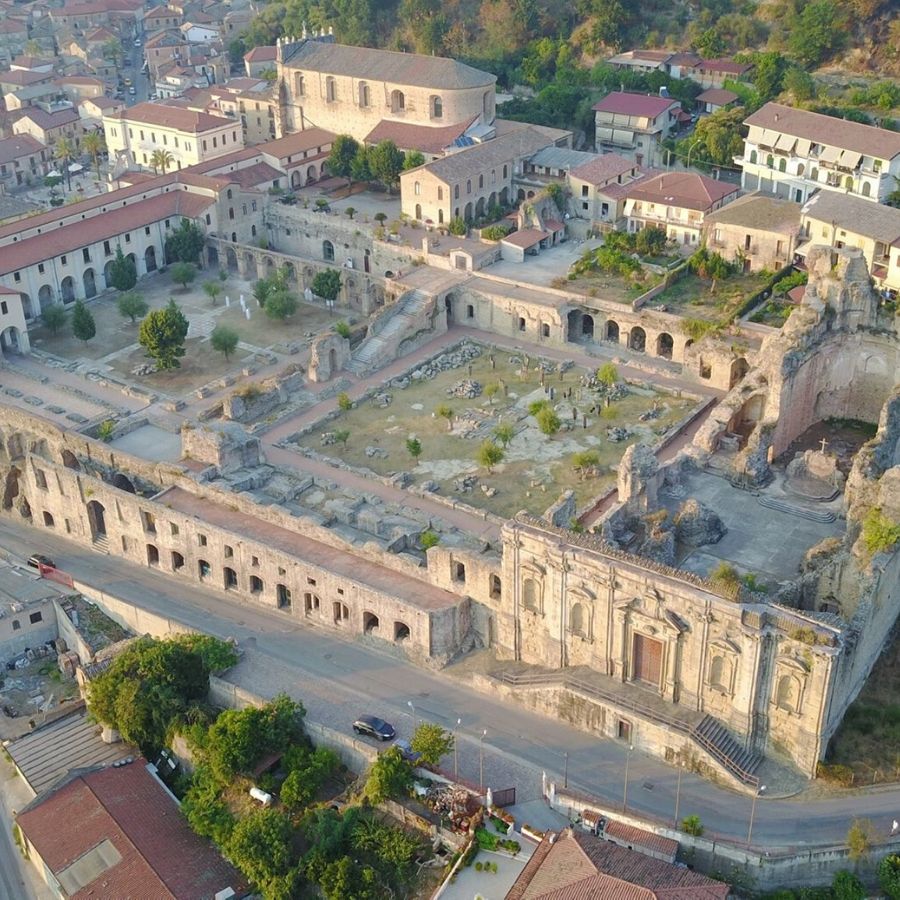
SORIANO CALABRO
The Convent of San Domenico and the MUMAR museum. 70 km from the Oasis.
It is worth visiting the ruins of a grandiose Dominican convent, one of the most important of the Order in Europe, an extraordinary centre of spiritual and cultural vitality; the fame of the complex is demonstrated by the fact that Emperor Charles V stopped there in 1535 on his return from the Tunisian expedition, four of its monks became popes, Tommaso Campanella lived there and even today, despite the spoliation of the past, it houses a rich library and a museum, the MUMAR. The museum arose from the need to organically bring together the entire collection of surviving works, including the painting of St Dominic to whom the convent is dedicated, and a series of beautiful sculptural pieces from the 17th to 18th centuries that once adorned the church.
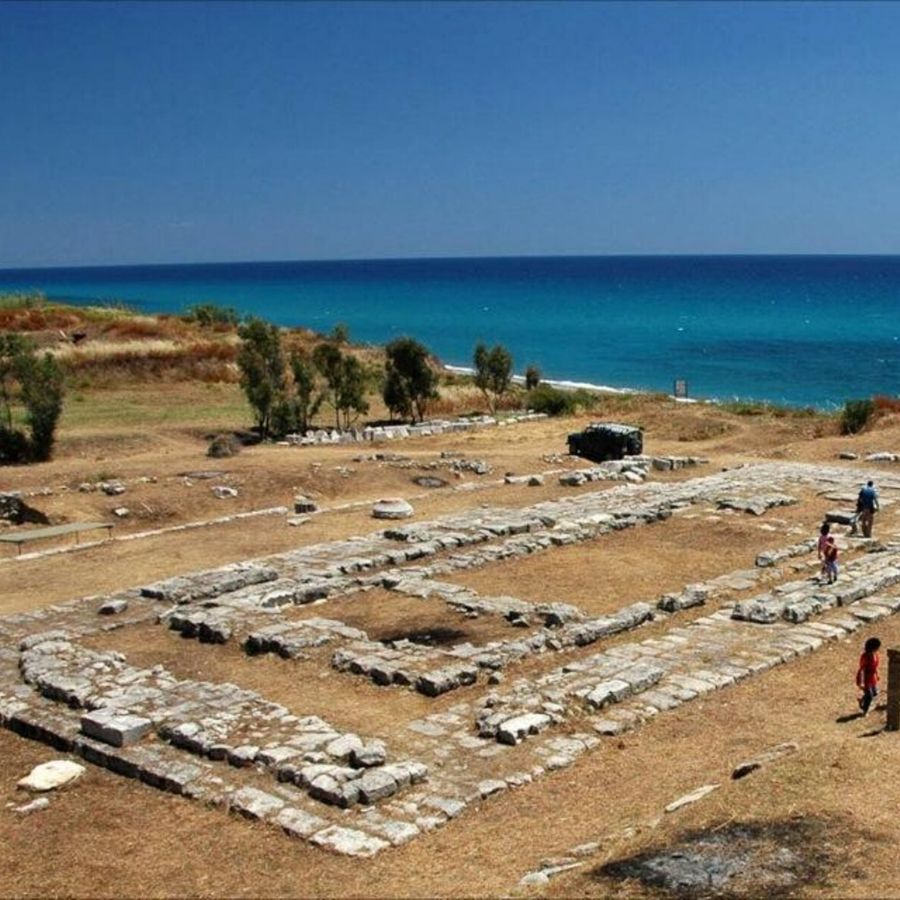
PUNTA STILO (Archaeological site of Kaulonia)
42 km from the Oasis
It was Paolo Orsi who identified the site with Kaulonia in the 19th century. Today, excavation campaigns are still underway that have revealed a development of the city below the current sea level. Kaulonia was surrounded by walls between 2 and 5 metres high reinforced by the presence of 12 defensive towers. Nothing remains, apart from the foundations of the buildings, as the materials were reused by the Byzantines around the 9th-10th century in the construction of the catholic church of Stilo. An archaeological site of striking beauty, Kaulonia overlooks the southern Ionian coast near Monasterace. 42 km from the Oasis.
56 km from the Oasis
It is a spectacular village on the slopes of Mount Consolino, dominated by the ruins of what was once a large and powerful Norman castle. The actual foundation of Stilo dates back to the time of urbanisation on the hills caused by the beginning of the Saracen incursions along the coast (9th century), and its greatness is due above all to the role that this centre played in the Byzantine era. In the historical centre, you can visit: the 13th-century Cathedral with a beautiful Gothic portal with small smooth and twisted columns and elegant bas-reliefs in Romanesque style; the fountain of the Dolphins, clearly oriental in style; the majestic convent of San Domenico; the medieval Stefanina gate; the church of San Francesco, one of the most beautiful 18th-century churches in Calabria; the caves of the Basilian monks and many beautiful views. Stilo is famous not only for being the birthplace of the philosopher Tommaso Campanella, but above all for its famous ‘Cattolica’, a true jewel of Byzantine art and architecture. Set into the living rock in one of the most beautiful and panoramic points of the town, from which you can admire the Stilaro valley and the sunny village with its roofs covered in “ceramides”, that is, tiles, the Cattolica is a grandiose example of architecture from that period (21st century). The building, surmounted by five small domes on a high cylindrical drum, bears witness to oriental influences, especially the similarities with the architecture of Georgia and Armenia. The interior is well preserved and many original frescoes with beautiful depictions of the lives of the saints are visible. If you’re thirsty, you’ll find a stall in the square in front of the church selling delicious almond milk, bergamot ice cream and top quality typical products.
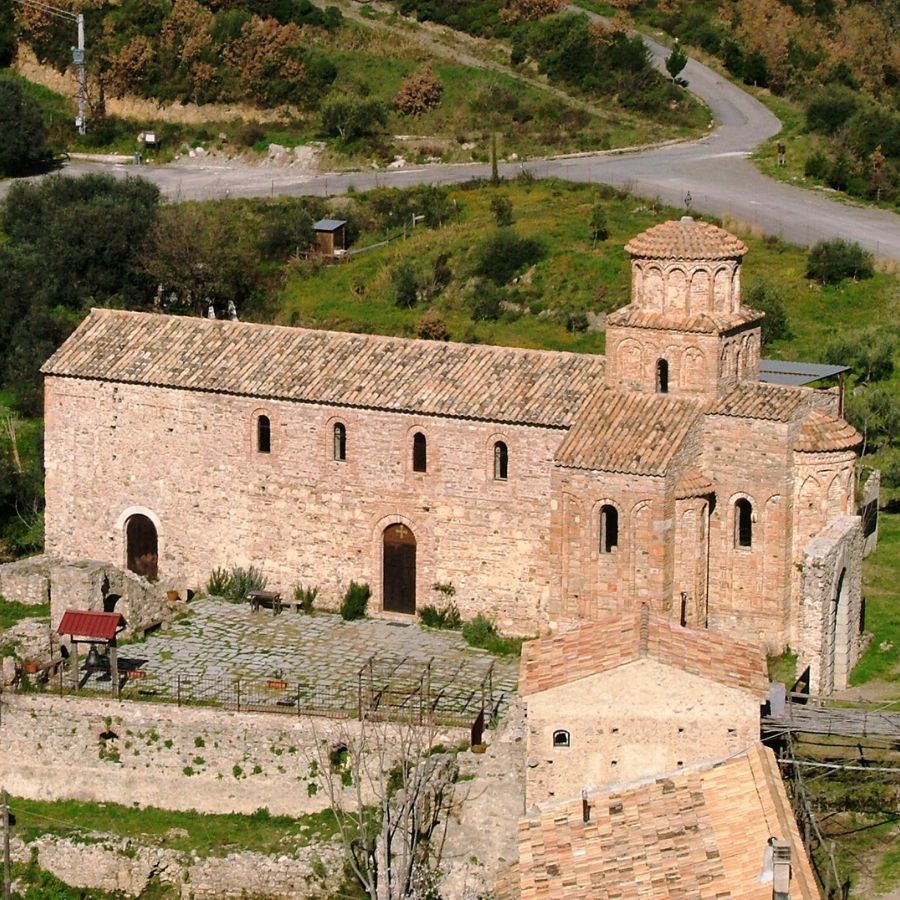
Bivongi, Monastery of St. John Theresti.
50 km from the Oasis
Founded around the 9th century and enlarged in the second half of the 12th century, it was abandoned in the 17th century because it was already unsafe and plundered. Today, the restored basilica has been reopened for Greek Orthodox worship, inhabited by a community of Romanian monks who have also opened a small shop where one can buy CDs of liturgical songs performed during Passion Week.
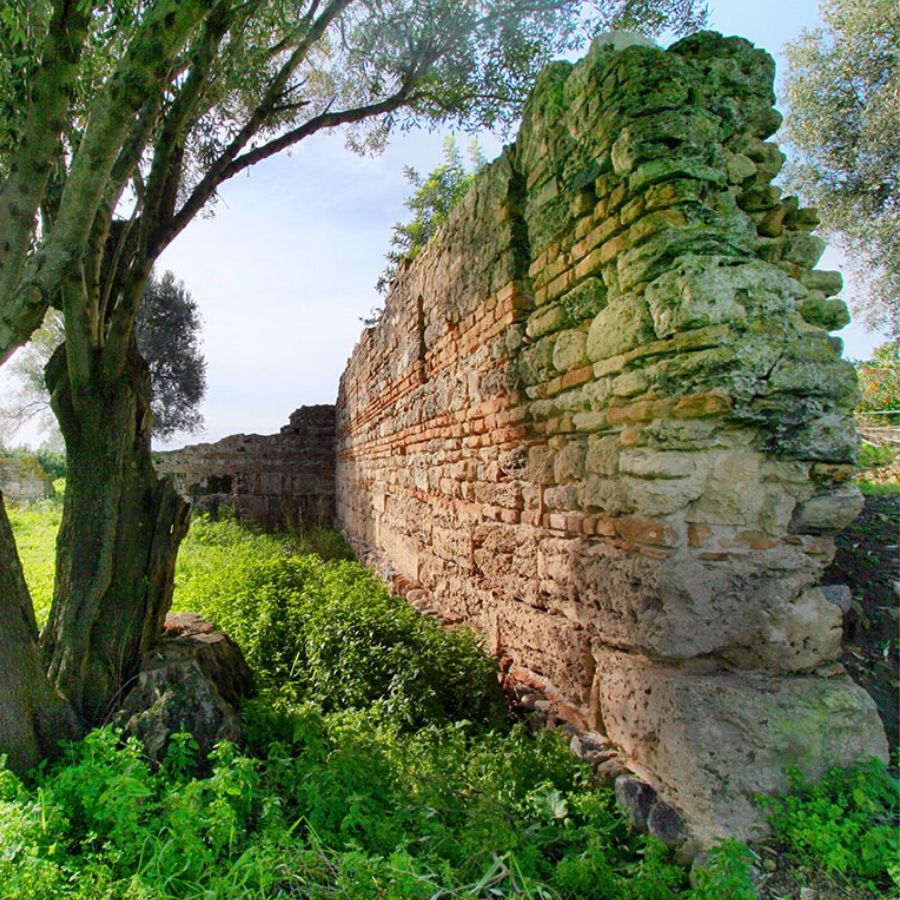
Locri Epizephyrii, archaeological site and museum
There are the remains of the ancient city founded around the VIII century B.C. by Greek colonists coming from Locride; it reached its maximum splendour around the VI century B.C. with the foundation of two sub-colonies on the Tyrrhenian Sea, Medma (Rosarno) and Hipponion (Vibo Valentia). It was abandoned around the X century because of the Arab raids on the whole coast, the inhabitants took refuge in the inland, in Gerace, destined to become the main centre of the area until the last century.
